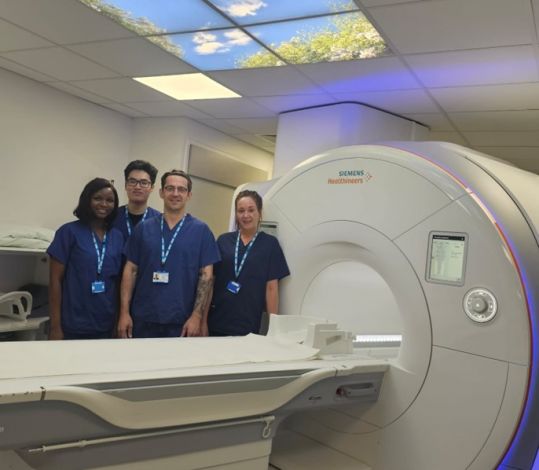Interventional Radiological techniques are used in most parts of the body, such as the blood vessels, the liver, biliary system and gut as well as the urinary tract.
Interventional radiologists are doctors who specialise in performing image guided minimally invasive surgery. Many of these procedures can replace traditional surgical operations. This can result in reduced complication rates and shorter stays in hospital
We have a soecial interventional radiology suite at Warrington Hospital with its own day ward where we can perform Interventional Radiology procedures.
- Femoral angiograms – dye is injected into the main artery of the body (aorta) via catheters. As the dye flows down the arteries in the legs x-rays are taken to show any abnormalities.
- Angioplasty – This is a way of relieving a blockage in an artery without having an operation. A fine plastic tube called a catheter is inserted through the blockage in the artery and a special balloon is then inflated, this opens up the blockage to allow more blood to flow down the artery.
- Stents – Metal or plastic stents can be inserted into arteries or veins to keep them patent (functioning correctly). This can relieve any blockage that’s in the vessel. Stents can also be positioned in the gut to relieve any blockage and this aids the digestion of food. This procedure is done under sedation and avoids surgery along with any associated risks.
- Embolisation – A small bleeding artery can be embolised (blocked or sealed). Fluid, containing thousands of tiny particles, is injected through a catheter into the small arteries. This silts up small blood vessels and blocks them.
- Percutaneous Nephrostomy – urine from a normal kidney drains through a narrow tube called a ureter into the bladder. If this tube becomes blocked for example, by a stone, the kidney can not drain and can become infected. It is possible to relieve the blockage by inserting a catheter through the skin into the kidney allowing urine to drain from the kidney into a collecting bag outside the body. Patients may no longer need surgery.
A dedicated team of Interventional Radiologists, Specialist Radiologists, Nurses and Support staff look after patients throughout their radiology procedures and on the radiology Day Case Ward.
All the above procedures are carried out by a specially trained doctor called a Radiologist. Radiologists have expertise in using x-ray equipment and also interpreting the images produced. They are able to look at these images while carrying out the procedure.
Interventional radiologists are doctors who specialise in performing image guided minimally invasive surgery. Many of these procedures can replace traditional surgical operations. This can result in reduced complication rates and shorter stays in hospital.
Interventional Radiology Suite
Burtonwood Wing
Warrington Hospital
Warrington
Cheshire
WA5 1QG


